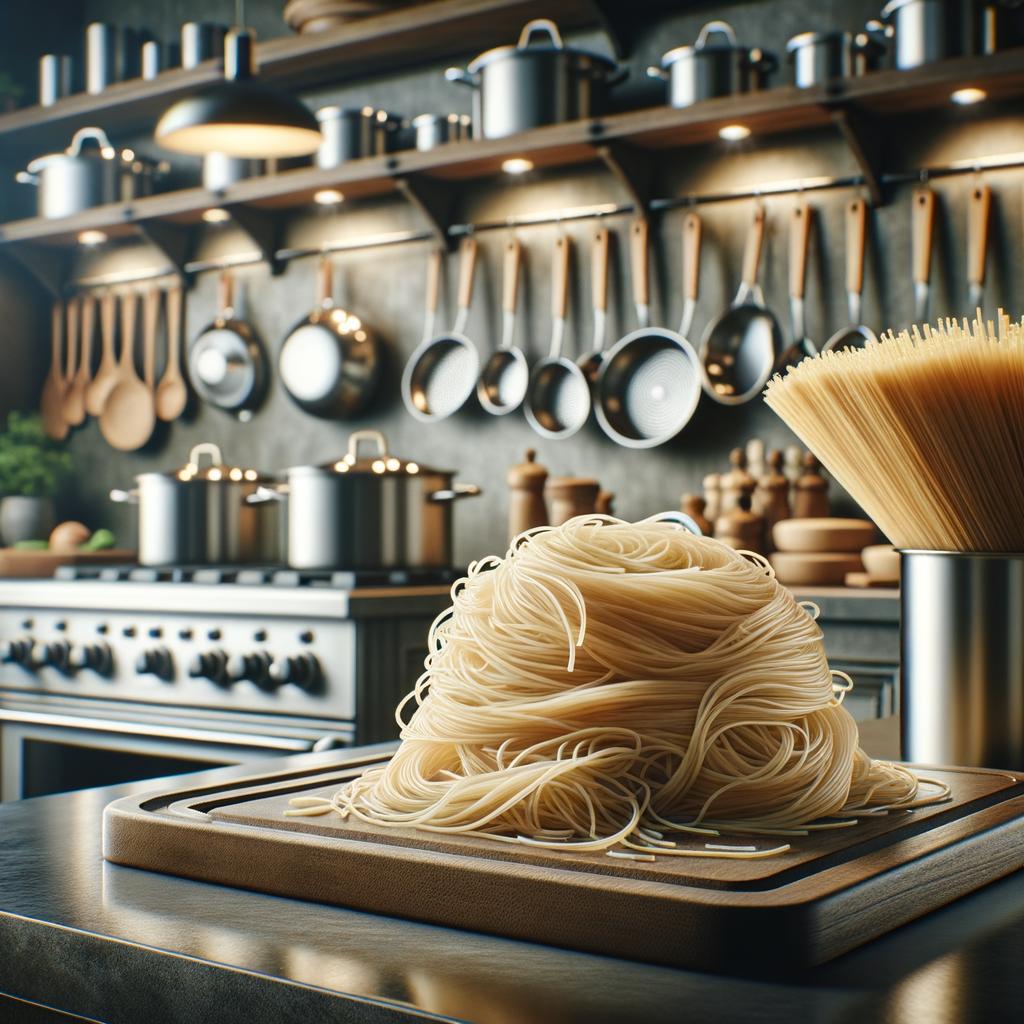Vermicelli Noodles

Description
Vermicelli noodles, often referred to as the angel hair of the pasta world, are an exquisite ingredient that boasts a delicate and refined nature. They are characterized by their thin, long, and cylindrical shape, resembling fine threads or strands of hair. Their texture is smooth and slightly firm, offering a delightful bite when cooked al dente. The flavor profile of vermicelli is subtle and neutral, making it an excellent canvas for a myriad of sauces and seasonings. What sets vermicelli apart from other types of pasta is its slender and delicate strands, which are thinner than spaghetti but thicker than capellini.
Primary Uses
Vermicelli noodles are versatile and are commonly used in a myriad of culinary applications. They are a key component in a variety of cuisines, from Italian to Asian. In Italian cuisine, they are often served with light, delicate sauces that do not overwhelm their delicate nature. In Asian cuisines, they are frequently used in stir-fries, soups, and salads. Vermicelli is also used in sweet dishes, like the Indian dessert 'Seviyan Kheer', where it is cooked with milk and sugar and garnished with nuts. Vermicelli's non-culinary uses are primarily cultural, often featuring in traditional meals during festive occasions or religious ceremonies in some cultures.
History
The history of vermicelli noodles is as intriguing as it is rich. Vermicelli, meaning 'little worms' in Italian, traces its roots back to the Roman Empire. However, it gained popularity during the Middle Ages, when it became a staple in Italian cuisine. In Asia, particularly in China, a similar version of vermicelli made from rice or mung beans has been consumed for centuries. Over time, the use of vermicelli has evolved and spread globally, with each culture adapting it to their unique culinary traditions. There are tales of Marco Polo introducing vermicelli to Italy from China, though this is more romantic folklore than historical fact.
Nutritional Information
Vermicelli noodles are not just a delight for the palate, but they also offer a variety of nutritional benefits. They are a good source of carbohydrates, providing energy for the body. Vermicelli made from whole grains or brown rice also contains dietary fiber, which aids in digestion. They also provide a small amount of protein and are low in fat. However, like other types of pasta, they should be consumed in moderation due to their high carbohydrate content. When compared to thicker pasta varieties, vermicelli has a similar nutritional profile but is often served in smaller portions due to its delicate nature. As always, the healthiest vermicelli dishes are those loaded with vegetables or lean proteins and light on high-fat sauces.

